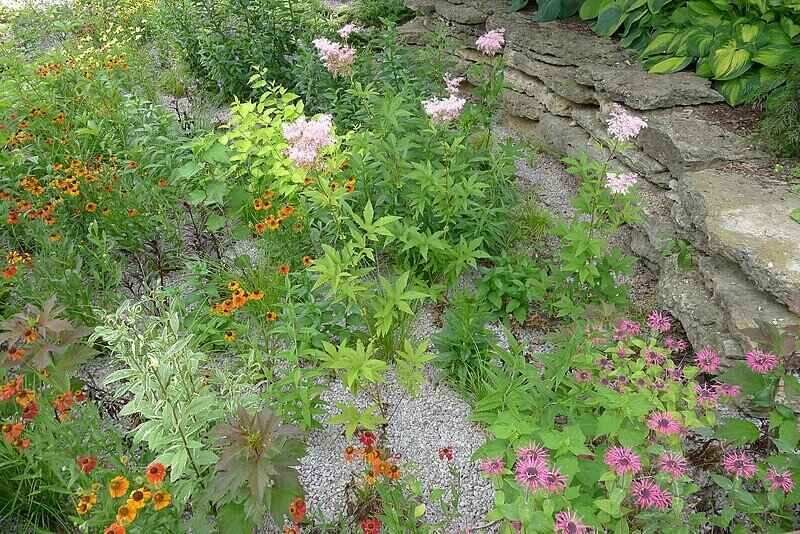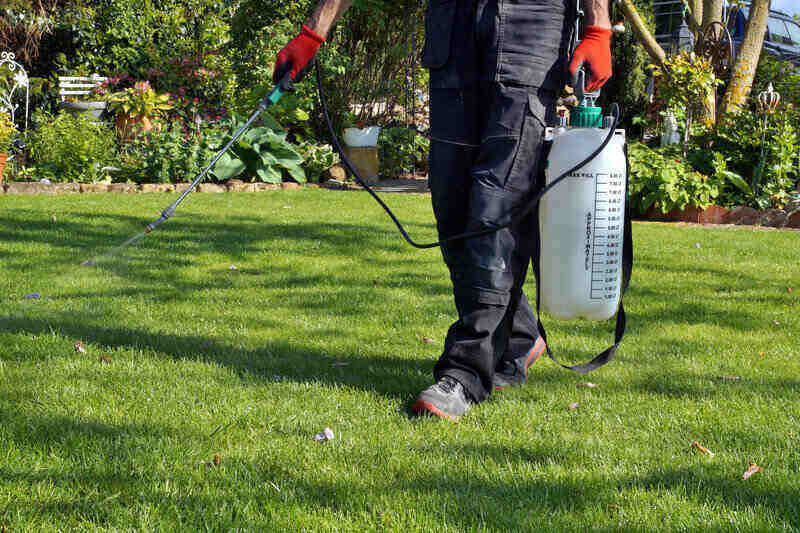
They say, “when it rains, it pours,” but it’s what comes next that’s the tricky part. When excess rain mixes with fertilizers, pesticides, animal waste, and other dangerous chemicals from your lawn, the runoff becomes a dirty, polluted mess. That’s why we’ve gathered 14 ways to manage stormwater runoff in your yard and why you should care about it.
What is stormwater runoff?
Stormwater runoff refers to the excess rainwater the ground doesn’t absorb during rainfall. The stormwater often collects pesticides, fertilizers, car oil, and animal waste as it runs across your lawn.
Stormwater runoff eventually finds its way into streams, rivers, and lakes; polluting waterways, and killing wildlife.
14 stormwater runoff solutions
So what can you do to reduce stormwater runoff in the yard and manage its environmental effects? Here are 14 solutions for managing stormwater runoff.
1. Install permeable pavers

Since concrete and non-porous surfaces reroute runoff, try permeable pavers instead. Permeable pavers facilitate drainage. Permeable pavers are an elegant drainage solution with wide joints that allow water to seep between them and enter the soil below.
2. Build a rain garden

Rain gardens are shallow, sunken areas of plantings that collect stormwater runoff. Also known as bioretention cells, rain gardens collect runoff water like a bowl before absorbing it into the ground, thereby reducing stormwater pollution from entering nearby storm drains. Rain gardens are a beautiful, eco-friendly solution to flooding from runoff.
Pro Tip: Include native plants in your rain garden. Why? Because native plants have deep root systems that help to filter out pollutants.
3. Collect water with cisterns

Another option for homeowners is to install underground or aboveground storage tanks. Also known as cisterns, these collection tanks are placed underneath impervious surfaces, such as driveways, parking lots, and roofs.
Like rain gardens, nearby sloped terrain funnels excess stormwater directly into the tanks. Homeowners can later pump out the water to irrigate the lawn or garden.
4. Try rain barrels

As the name suggests, rain barrels collect rain directly from downspouts. By capturing the water, it avoids joining streams and rivers. The water captured by the barrel is later available to hydrate your garden or turfgrass. Most barrels hold about 50 gallons of water and typically cost $50 to $150.
5. Add vegetation to bare spots on your lawn

Plants not only filter water through their root systems, but those roots ‘grab’ the soil and keep it in place. Therefore, ground covers lessen runoff and erosion.
Native plants are ideal ground covers because of their familiarity with the local habitat and ability to survive with minimal upkeep.
6. Never dump anything down the storm drains

Improper disposal of chemicals into storm sewers is not only bad for the environment, it’s against the law. Dumping anything into storm drains is simply polluting.
If you’re unsure how to dispose of a particular chemical (such as fertilizers or pesticides) check the label or schedule a pick-up with your local hazardous waste facility.
7. Use fertilizers sparingly

Fertilizers help things grow, especially your turfgrass. When mixed with stormwater, fertilizers breed algae which can overtake aquatic ecosystems. The algae reduces the dissolved oxygen content in the water, suffocating fish and other aquatic species as a result.
8. Practice proper pest management

Similar to fertilizers, pesticides are a significant pollutant in stormwater runoff. Consider hiring a professional who is trained to apply pesticides with minimal impact on the environment. Another option is to apply eco-friendly organic pesticides.
Pro Tip: Integrated Pest Management (IPM) is an eco-friendly approach to pest control that can reduce pesticides in stormwater runoff.
9. Don’t bag your leaves

Try using a mulching lawn mower instead. The mulched leaves will soak up the water like a sponge. Plus, the shredded leaves are a great source of nutrients for your lawn.
10. Pick up after your pet

Aside from being the proper thing to do, picking up after your pet keeps fecal bacteria out of our lakes and rivers. When pet waste drains into local bodies of water, this increases public health risks and causes infections. By picking up after your pet, you can keep dangerous bacteria out of your drinking water.
11. Don’t wash your car on your street or driveway

Impervious services, such as driveways and streets, prevent runoff from soaking into the ground. Washing your car on these impervious services may lead to car oil, brake fluid, and other contaminants flowing into storm drains.
Instead, take your car to a professional car wash. Car washes have wastewater management systems that help keep the soap and other contaminants out of local waterways.
12. Fix fluid leaks in your vehicles

Don’t wait for the rain to wash those stains off your driveway, it’s time to call your mechanic. Oil, brake fluids, and antifreeze can pollute our waterways with heavy metals. Keep your vehicles running smoothly and well-maintained.
13. Don’t overdo the deicers
Road salt and other de-icing products protect your safety, but they can also have a detrimental impact on the environment. When road salts and deicers wash off non-porous surfaces, they pollute our soil and water. With nowhere else to go, these chemicals and excess salt make their way through storm drains and end up in rivers and lakes, altering ecosystems.
When using these products, follow all instructions carefully and apply the appropriate amount. Clean up spills and excess salt. For a more eco-friendly alternative, consider sand or regular kitty litter.
14. Aerate the lawn

When your lawn’s soil is compacted, it struggles to uptake water, nutrients, and oxygen. As a result, runoff will roll off the lawn with ease.
Core aeration is the process of removing plugs of soil from the ground to help relieve soil compaction. Aeration will help to facilitate the movements of water, nutrients, and oxygen, allowing your lawn to absorb rainfall.
FAQ about stormwater runoff
Stormwater runoff affects everyone. Some problems stormwater runoff causes include:
• Flooding
• Property damage
• Erosion
• Sedimentation in water systems, which causes flooding, clouds water, and kills aquatic ecosystems
• Pollutes drinking water
Most stormwater joins streams and creeks. Eventually, that water will travel to other larger bodies of water until it reaches the ocean.
Stormwater can be full of toxic chemicals. Common pollutants in stormwater runoff are:
• Sewage
• Bacteria from pet waste
• Motor oil
• Construction debris
• Fertilizers
• Pesticides
• Paint
• Trash
About 35% of rainwater becomes runoff in streams and rivers. About 65% of rainfall returns to the atmosphere through evaporation.
When to hire a professional
Is your yard prone to flooding? Do yourself a favor and call a landscaping professional who can help redirect rainwater runoff. Having a professional install the best drainage solution for your yard will help prevent toxic chemicals from entering local bodies of water during rainfall.
Need help with aeration and relieving the compacted soil that’s contributing to rainwater runoff? Let Lawn Love connect you with a local lawn care pro.
Main photo credit: CSIRO | CC BY 3.0 | via Wikimedia Commons